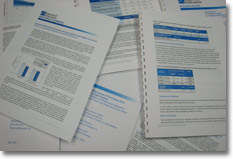Getting Different Results from the Same Program in Different Contexts
The spring 2014 conference of the Society for Research in Educational Effectiveness (SREE) gave us much food for thought concerning the role of replication of experimental results in social science research. If two research teams get the same result from experiments on the same program, that gives us confidence that the original result was not a fluke or somehow biased.
But in his keynote, John Ioannidis of Stanford showed that even in medical research, where the context can be more tightly controlled, replication very often fails—researchers get different results. The original finding may have been biased, for example, through the tendency to suppress null findings where no positive effect was found and over-report large, but potentially spurious results. Replication of a result over the long run helps us to get past the biases. Though not as glamorous as discovery, replication is fundamental to science, and educational science is no exception.
In the course of the conference, I was reminded that the challenge to conducting replication work is, in a sense, compounded in social science research. “Effect heterogeneity”—finding different results in different contexts—is common for many legitimate reasons. For instance, experimental controls seldom get placebos. They receive the program already in place, often referred to as “business as usual,” and this can vary across experiments of the same intervention and contribute to different results. Also, experiments of the same program carried out in different contexts are likely to be adapted given demands or affordances of the situation, and flexible implementation may lead to different results. The challenge is to disentangle differences in effects that give insight into how programs are adapted in response to conditions, from bias in results that John Ioannidis considered. In other fields (e.g., the “hard sciences”), less context dependency and more-robust effects may make it easier to diagnose when variation in findings is illegitimate. In education, this may be more challenging and reminds me why educational research is in many ways the ‘hardest science’ of all, as David Berliner has emphasized in the past.
Once separated from distortions of bias and properly differentiated from the usual kind of “noise” or random error, differences in effects can actually be leveraged to better understand how and for whom programs work. Building systematic differences in conditions into our research designs can be revealing. Such efforts should, however, be considered with the role of replication in mind—an approach to research that purposively builds in heterogeneity, in a sense, seeks to find where impacts don’t replicate, but for good reason. Non-reproducibility in this case is not haphazard, it is purposive.
What are some approaches to leveraging and understanding effect heterogeneity? We envision randomized trials where heterogeneity is built into the design by comparing different versions of a program or implementing in diverse settings across which program effects are hypothesized to vary. A planning phase of an RCT would allow discussions with experts and stakeholders about potential drivers of heterogeneity. Pertinent questions to address during this period include: what are the attributes of participants and settings across which we expect effects to vary and why? Under which conditions and how do we expect program implementation to change? Hypothesizing which factors will moderate effects before the experiment is conducted would add credibility to results if they corroborate the theory. A thoughtful approach of this sort can be contrasted with the usual approach whereby differential effects of program are explored as afterthoughts, with the results carrying little weight.
Building in conditions for understanding effect heterogeneity will have implications for experimental design. Increasing variation in outcomes affects statistical power and the sensitivity of designs to detect effects. We will need a better understanding of the parameters affecting precision of estimates. At Empirical, we have started using results from several of our experiments to explore parameters affecting sensitivity of tests for detecting differential impact. For example, we have been documenting the variation across schools in differences in performance depending on student characteristics such as individual SES, gender, and LEP status. This variation determines how precisely we are able to estimate the average difference between student subgroups in the impact of a program.
Some may feel that introducing heterogeneity to better understand conditions for observing program effects is going down a slippery slope. Their thinking is that it is better to focus on program impacts averaged across the study population and to replicate those effects across conditions; and that building sources of variation into the design may lead to loose interpretations and loss of rigor in design and analysis. We appreciate the cautionary element of this position. However, we believe that a systematic study of how a program interacts with conditions can be done in a disciplined way without giving up the usual strategies for ensuring the validity of results.
We are excited about the possibility that education research is entering a period of disciplined scientific inquiry to better understand how differences in students, contexts, and programs interact, with the hope that the resulting work will lead to greater opportunity and better fit of program solutions to individuals.



